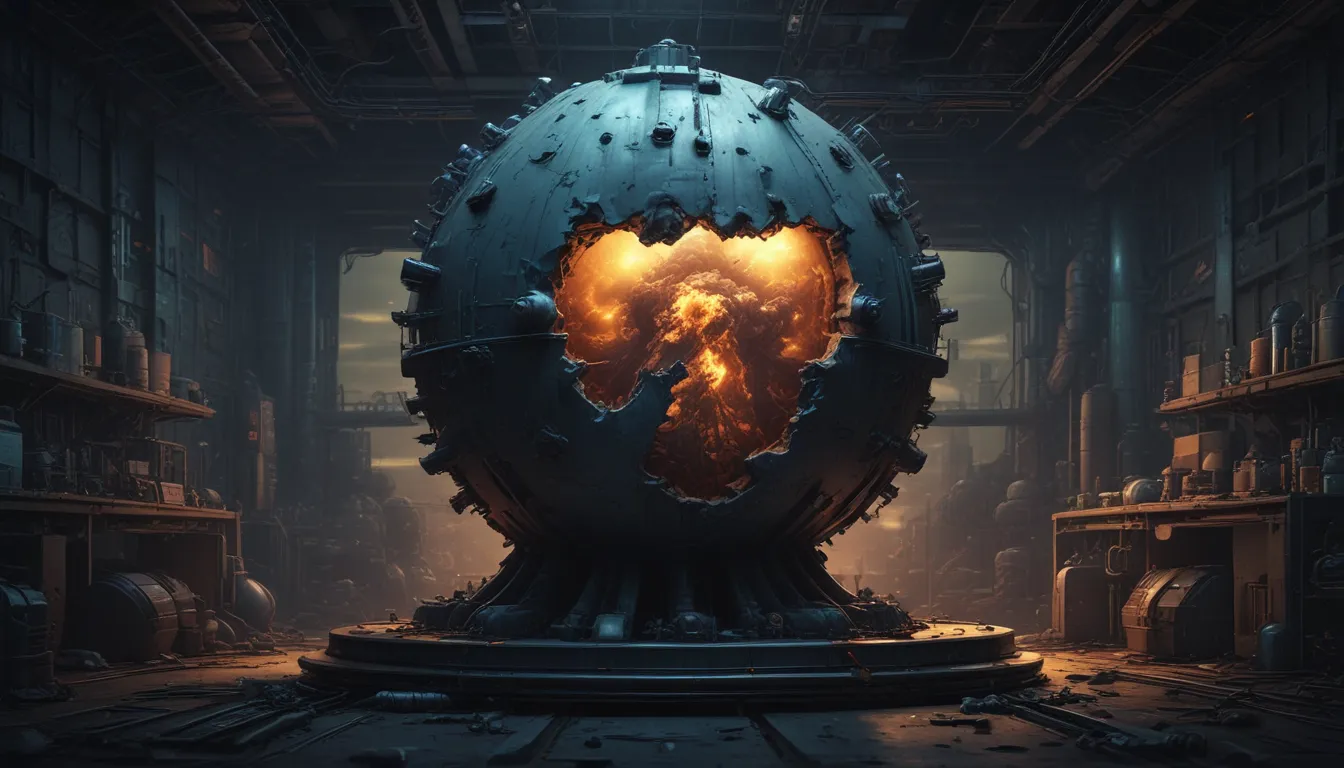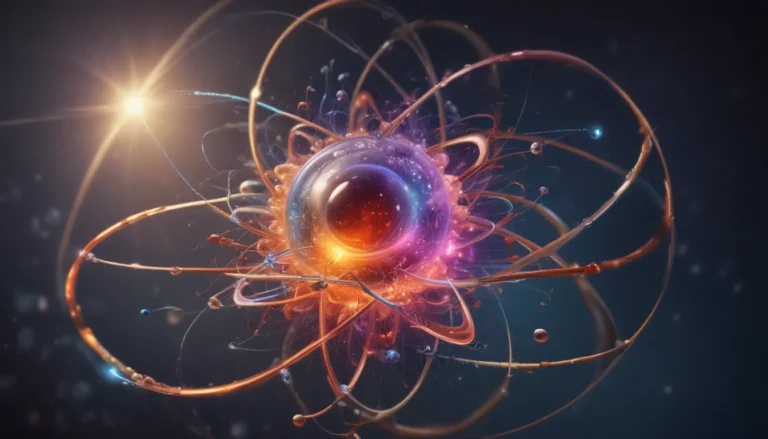A Note About Images: The images used in our articles are for illustration purposes only and may not exactly match the content. They are meant to engage readers, but the text should be relied upon for accurate information.
In the vast and complex realm of the atomic world, nuclear decay stands out as a captivating phenomenon that offers valuable insights into the composition and behavior of matter. Scientists have extensively studied this natural process, also known as radioactive decay, which involves the spontaneous transformation of the atomic nucleus, accompanied by the release of various types of radiation.
Join us on an enlightening journey through the fascinating world of nuclear decay as we unravel 10 captivating facts about this intriguing process. From the different types of radioactive decay to its practical applications in various fields such as medicine, energy production, and archaeology, we will explore how nuclear decay plays a crucial role in shaping our understanding of the universe.
Key Takeaways:
- Nuclear decay is a random process encompassing three main types: alpha, beta, and gamma decay. It serves as a cornerstone for carbon dating, energy production, and contributes to the formation of elements in the universe. – The concept of half-life, a fascinating aspect of nuclear decay, plays a vital role in nuclear energy production and our understanding of the universe’s composition.
Unraveling the Mystery of Half-Life
One of the most intriguing aspects of nuclear decay is the concept of half-life, which represents the time required for half of the radioactive atoms in a sample to undergo decay. This characteristic is unique to each radioactive isotope, with half-lives ranging from microseconds to billions of years, providing valuable insights into the stability and decay rates of atomic nuclei.
Embracing the Random Nature of Radioactive Decay
Radioactive decay is a purely random process that cannot be influenced by external factors such as temperature or pressure. The decay of radioactive particles occurs independently and spontaneously, following a probabilistic behavior that contributes to the natural evolution of atomic nuclei.
Exploring the Three Types of Nuclear Decay
Radioactive decay manifests through three distinct processes: alpha decay, beta decay, and gamma decay. Alpha decay involves the emission of an alpha particle composed of two protons and two neutrons, while beta decay entails the release of either an electron (beta-minus) or a positron (beta-plus). Gamma decay is characterized by the emission of high-energy gamma rays, contributing to the stabilization of atomic nuclei.
Unveiling the Secrets of Nuclear Decay in Carbon Dating
Carbon dating relies on the decay of radioactive carbon isotopes, particularly carbon-14, to determine the age of ancient artifacts and organic remains. By analyzing the ratio of carbon-14 to carbon-12 in a sample, scientists can calculate the time elapsed since the organism’s demise, revolutionizing archaeological dating methods.
Delving Into Decay Series and Transmutations
Many radioactive isotopes undergo a series of successive decays until they reach a stable isotope, involving multiple steps wherein each decay releases distinct particles or alters the atomic number and mass of the nucleus. These transmutations are fundamental in the natural formation of elements within the universe.
Uniting Nuclear Decay with Fusion and Fission Reactions
Nuclear decay is intrinsically linked to nuclear reactions such as fusion and fission. Fusion reactions entail the fusion of atomic nuclei to form larger nuclei, while fission reactions involve the splitting of heavy nuclei into smaller fragments, releasing vast amounts of energy in the process. These reactions find applications in power generation and weapons development.
Understanding Radiation and Its Health Implications
Radiation emitted during nuclear decay can have both beneficial and detrimental effects on living organisms. While ionizing radiation poses risks by damaging cells and DNA, it is also utilized in medical imaging techniques and cancer treatment. Awareness of radiation effects is crucial for ensuring the safe application of nuclear technologies.
Upholding the Laws of Conservation in Nuclear Decay
The laws of conservation, including the conservation of mass and energy, play a pivotal role in nuclear decay processes. These laws dictate that the total mass and energy of the particles involved in a nuclear transformation remain constant, highlighting the fundamental principles governing atomic interactions.
Harnessing Nuclear Decay for Energy Production
Nuclear decay lies at the core of nuclear energy production, where controlled decay of radioactive materials generates vast amounts of energy utilized in electricity generation. This clean and efficient energy source contributes significantly to global electricity production, showcasing the importance of nuclear decay in sustainable energy solutions.
Embracing the Role of Nuclear Decay in the Universe
Nuclear decay plays a crucial role in the evolutionary processes within the universe, facilitating the formation of elements in celestial bodies, energy release in supernovae, and the dating of rocks and distant astronomical objects. Understanding nuclear decay unveils the mysteries of celestial phenomena and the dynamic nature of the universe.
Conclusion
In conclusion, the captivating process of nuclear decay offers profound insights into the intricate world of atomic interactions. From the diverse types of radioactive decay to its applications in various fields, nuclear decay shapes our understanding of the universe and fuels technological advancements in medicine, energy production, and beyond. By unraveling the mysteries of nuclear decay, scientists continue to unlock the secrets of matter and energy, paving the way for innovative discoveries and scientific breakthroughs.
FAQs
-
What is nuclear decay?
Nuclear decay refers to the spontaneous transformation of an atomic nucleus through the emission of particles or energy, resulting in the formation of a different nucleus. -
How many types of nuclear decay exist?
There are three primary types of nuclear decay: alpha decay, beta decay, and gamma decay. -
What is alpha decay?
Alpha decay occurs when an unstable nucleus emits an alpha particle composed of two protons and two neutrons. -
How does beta decay occur?
Beta decay involves the emission of either a beta particle (an electron) or a positron (a positively charged electron) from the nucleus of an atom. -
What is gamma decay?
Gamma decay represents the release of high-energy gamma rays from a nucleus, often accompanying the emission of alpha or beta particles. -
How is nuclear decay utilized in medicine?
Nuclear decay finds applications in medical imaging and cancer treatment through techniques like positron emission tomography (PET) and radiotherapy. -
Can nuclear decay be controlled?
While nuclear decay itself is random, its processes can be harnessed in nuclear power plants to generate energy in a controlled manner. -
What are some practical applications of nuclear decay?
Nuclear decay is employed in fields such as radiocarbon dating, industrial non-destructive testing, and the production of medical isotopes for diagnostics and treatments. -
Is nuclear decay hazardous?
Improper handling of nuclear decay can pose risks due to the emission of harmful radiation. However, with adequate safety measures and regulations, the potential dangers associated with nuclear decay can be mitigated. -
How does nuclear decay contribute to our understanding of the universe?
Studying nuclear decay provides valuable insights into fundamental aspects of matter, the origins of elements, and the life cycles of stars, aiding in the exploration of the universe’s mysteries and evolutionary processes.
As we venture deeper into the captivating realm of nuclear decay, we unveil the wonders of atomic interactions that shape our world and expand human knowledge. Join us in unraveling the secrets of nuclear decay and embracing its profound impact on science, technology, and the cosmos. Let the captivating allure of nuclear decay inspire your curiosity and ignite a passion for exploring the mysteries of the atomic universe.






